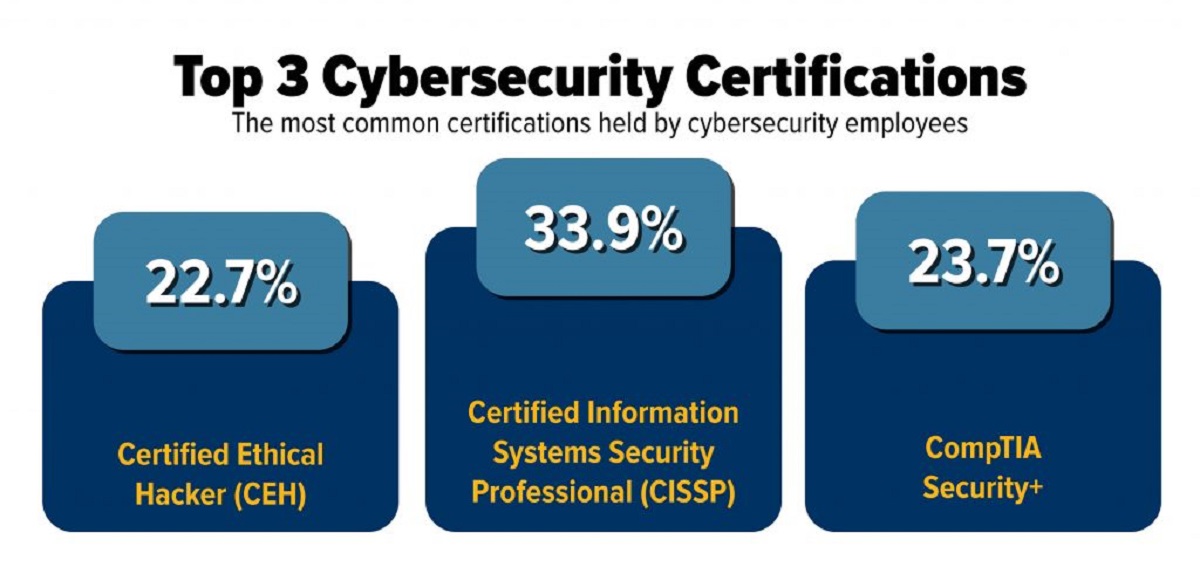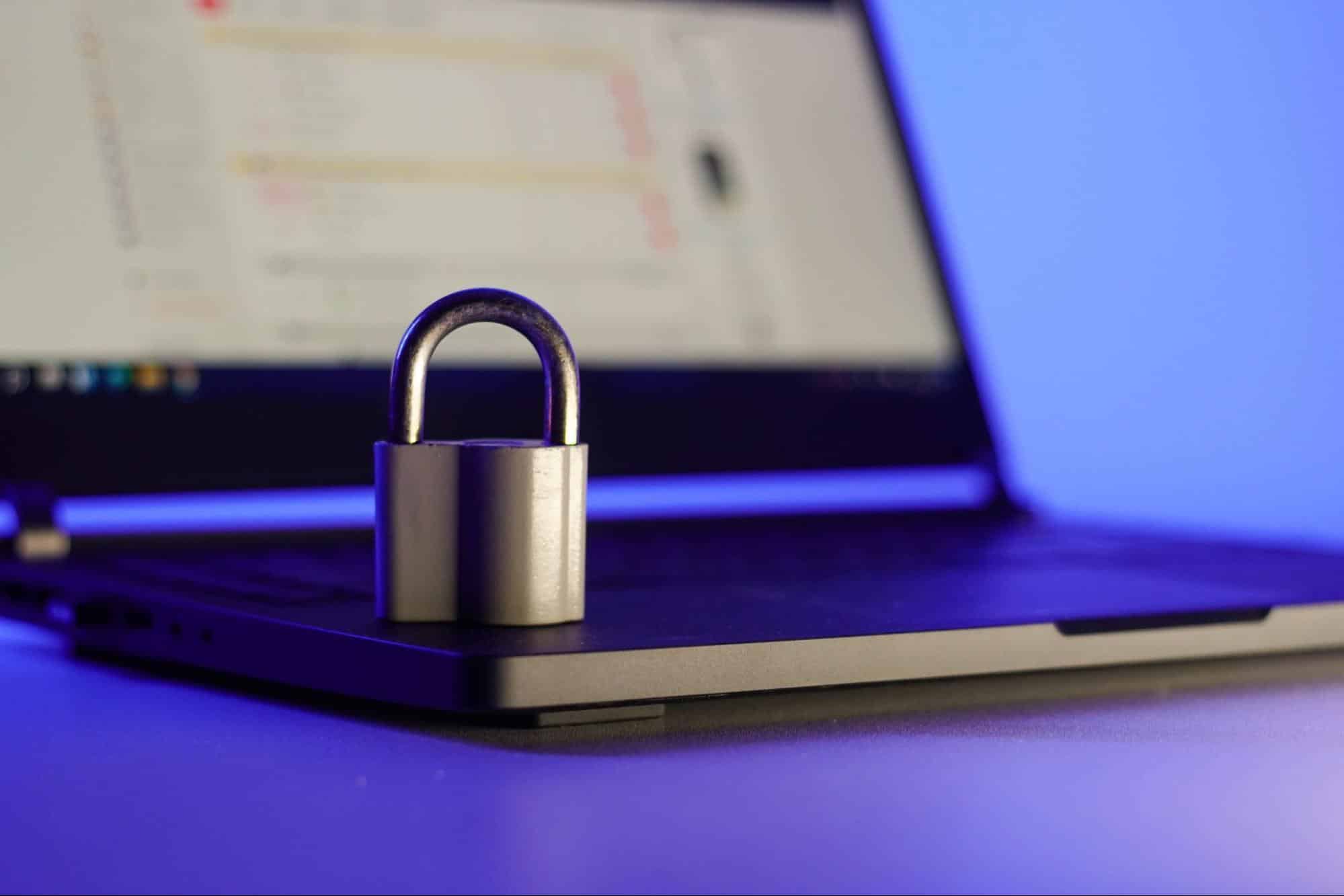Introduction
Welcome to the digital age, where technology is deeply integrated into our everyday lives. With the increasing reliance on the internet and connected devices, the need for cybersecurity has never been more critical. Cyber threats continue to evolve, posing risks to individuals, organizations, and even nations. In this fast-paced and interconnected world, it is essential to equip our students with the necessary knowledge and skills to navigate the digital landscape safely and responsibly.
Cybersecurity education for students is not just about protecting sensitive information or preventing cyberattacks. It goes beyond that, fostering critical thinking, problem-solving, and digital literacy skills. Teaching cybersecurity to students empowers them to become responsible digital citizens, enabling them to make informed decisions, protect their personal information, and contribute positively to the digital community.
Engaging students in cybersecurity education not only addresses the immediate concerns of online safety and privacy but also prepares them for future careers. As the demand for cybersecurity professionals continues to outpace supply, there are abundant opportunities in this field. By introducing cybersecurity concepts at an early age, we nurture their interest and potential in pursuing careers in cybersecurity, filling the skills gap and strengthening our digital defenses.
This article aims to explore the importance of teaching cybersecurity to students and provide insights into integrating cybersecurity into the curriculum. We will discuss strategies for teaching students about online safety and privacy, ways to identify and protect against cyber threats, and engaging students through hands-on activities and projects. Additionally, we will explore the concept of ethical hacking, fostering a cybersecurity mindset, and creating a cybersecurity culture in the school community.
Why Teach Cybersecurity to Students?
The digital age presents numerous opportunities, but it also brings unprecedented cybersecurity risks. Teaching cybersecurity to students is crucial for several reasons:
1. Protecting personal information: In today’s digital world, individuals constantly share personal information online. Teaching students about cybersecurity helps them understand the importance of safeguarding their personal data, such as passwords, social security numbers, and financial information. It empowers them to take control of their digital footprint and protect themselves from identity theft and cybercrimes.
2. Nurturing responsible digital citizens: Cybersecurity education instills responsible online behavior in students. It teaches them about the ethical use of technology, respect for others’ privacy, and the consequences of cyberbullying and online harassment. By imparting these values, we shape responsible digital citizens who contribute positively to the online community.
3. Building digital literacy skills: Cybersecurity education goes hand in hand with digital literacy. Understanding the basics of cybersecurity equips students with the knowledge and skills to navigate the digital landscape safely. They learn about online threats, how to identify phishing attempts, and the importance of updating software regularly. These skills are essential for students to thrive in a technology-driven world.
4. Preparing for future careers: The demand for cybersecurity professionals is skyrocketing, with a significant shortage of skilled individuals to fill these positions. By teaching cybersecurity to students, we expose them to potential career pathways. We can cultivate their interest in cybersecurity and introduce them to the diverse range of opportunities available in this field. This not only addresses the skills gap but also supports economic growth and national security.
5. Empowering critical thinking and problem-solving skills: Cybersecurity education promotes critical thinking, problem-solving, and analytical reasoning skills. Students learn to analyze and evaluate potential risks, develop strategies to protect against threats, and apply ingenuity to solve complex cybersecurity challenges. These skills transcend the digital realm, benefiting students in various aspects of their lives.
In summary, teaching cybersecurity to students is essential for protecting personal information, nurturing responsible digital citizens, building digital literacy skills, preparing for future careers, and empowering critical thinking. By equipping students with the necessary cybersecurity knowledge and skills, we provide them with the tools to navigate the digital world safely, responsibly, and confidently.
Understanding the Basics of Cybersecurity
Cybersecurity encompasses a wide range of concepts and practices aimed at protecting digital systems, networks, and data from unauthorized access, damage, or theft. By teaching students the basics of cybersecurity, we lay a strong foundation for their digital safety and security. Here are some key areas to cover:
1. Threat landscape: Students need to understand the various threats that exist in the digital world. This includes malware, phishing, social engineering, hacking, identity theft, and more. Explaining these threats in a clear and accessible manner makes students aware of potential risks and encourages them to adopt safe practices.
2. Password security: Passwords are a critical element of cybersecurity. Teach students the importance of creating strong, unique passwords and regularly changing them. Emphasize the need for using a combination of letters, numbers, and special characters to create strong passwords that are difficult to guess or crack.
3. Safe online practices: Students must be educated on safe online practices such as avoiding suspicious or unknown websites, refraining from clicking on suspicious links or attachments, and being cautious when sharing personal information online. Reinforce the importance of thinking critically and being skeptical of requests for personal information.
4. Data protection: Teach students about the importance of data protection and the risks associated with sharing personal information. Emphasize the need to be mindful of what information they share online and with whom. Encourage them to actively review privacy settings on social media platforms and to limit the amount of personal information they share publicly.
5. Security updates: Students should understand the significance of keeping their devices and software up to date. Regularly updating operating systems, applications, and antivirus software helps protect against known vulnerabilities and ensures the latest security patches are in place.
6. Cyber ethics: Instilling a strong sense of cyber ethics is vital for responsible digital citizenship. Teach students about the ethical implications of hacking, unauthorized access, plagiarism, and cyberbullying. Encourage discussions around responsible online behavior, respecting others’ privacy, and the consequences of unethical actions in the digital realm.
7. Incident response: Educate students on what to do in the event of a cybersecurity incident. Teach them to report suspicious activities, seek help from a trusted adult or authority figure, and take steps to mitigate any potential damage. By empowering them with this knowledge, students will be better equipped to respond appropriately and effectively in times of crisis.
By understanding the basics of cybersecurity, students develop a strong foundation upon which to build their digital literacy and security skills. These fundamental concepts lay the groundwork for more advanced knowledge and abilities, enabling students to navigate the digital world safely, responsibly, and with confidence.
Integrating Cybersecurity into the Curriculum
Integrating cybersecurity into the curriculum is essential to ensure that students receive comprehensive and ongoing education on digital safety and security. By incorporating cybersecurity into various subjects and grade levels, we can provide students with the knowledge and skills they need to navigate the digital world securely. Here are some strategies for integrating cybersecurity into the curriculum:
1. Cross-curricular approach: Cybersecurity should not be confined to a single subject but rather integrated across multiple subjects. Collaborate with teachers in different disciplines to identify opportunities to incorporate cybersecurity concepts into lessons. For example, math teachers can include discussions on encryption algorithms, English teachers can explore ethical debates surrounding cybersecurity, and science teachers can teach about the principles of cybersecurity in network systems.
2. Age-appropriate content: Customize the cybersecurity content based on the age and maturity of the students. Younger students can learn about password security and online safety, while older students can delve into more complex topics like cryptography, network security, and ethical hacking. Tailoring the content to the students’ age ensures relevance and engagement.
3. Project-based learning: Engage students in hands-on, project-based activities that require them to apply their cybersecurity knowledge and skills. For example, have students create secure passwords, develop and present cybersecurity awareness campaigns, or simulate real-world cyber attack scenarios and devise strategies to mitigate them. These practical projects enhance students’ understanding and allow them to experience the relevance of cybersecurity in a tangible way.
4. Guest speakers and industry partnerships: Invite guest speakers from the cybersecurity industry or local law enforcement agencies to share their expertise with students. This provides real-world perspectives and insights into the importance of cybersecurity. Establishing partnerships with local cybersecurity firms or universities can also provide opportunities for students to engage in internships or mentorship programs, further deepening their understanding of cybersecurity.
5. Professional development for teachers: Provide ongoing professional development opportunities for teachers to enhance their knowledge of cybersecurity. Offer workshops, seminars, or online courses that focus on the latest trends, best practices, and teaching methodologies in cybersecurity education. Equipping teachers with the necessary knowledge and skills ensures effective integration of cybersecurity concepts into their teaching practice.
6. Assessment and evaluation: Create assessments and evaluations that include cybersecurity-related questions or projects. This helps measure students’ understanding of cybersecurity concepts and their ability to apply them in practical scenarios. By including cybersecurity in assessments, students recognize its importance and are motivated to learn and apply the knowledge.
Integrating cybersecurity into the curriculum ensures that students receive consistent exposure to cybersecurity concepts, skills, and best practices throughout their educational journey. By embedding cybersecurity into various subjects and utilizing engaging teaching methodologies, we equip students with the tools they need to navigate the digital world safely and responsibly.
Teaching Students about Online Safety and Privacy
In an increasingly digital world, teaching students about online safety and privacy is of utmost importance. Students must understand the potential risks and develop the necessary skills to protect themselves online. Here are some key areas to focus on when teaching students about online safety and privacy:
1. Personal information protection: Educate students about the importance of safeguarding their personal information. Teach them to be cautious about sharing sensitive information, such as full names, addresses, phone numbers, and email addresses, online. Encourage them to critically evaluate the information they disclose and to limit sharing personal details to trusted sources and platforms.
2. Privacy settings and social media: Guide students on setting appropriate privacy controls on social media platforms, emphasizing the importance of controlling who can access and view their posts, photos, and personal details. Teach them how to navigate privacy settings and how to be mindful of the potential risks associated with oversharing personal information on social media.
3. Understanding online risks: Make students aware of common online risks, such as cyberbullying, online scams, and identity theft. Discuss the impact of cyberbullying on individuals’ mental health and emphasize the significance of being respectful and kind when communicating with others online. Teach them how to recognize and report bullying or abusive behavior.
4. Online gaming safety: Many students engage in online gaming, which can come with its own set of risks. Educate students about the importance of safe online gaming, including not sharing personal information with strangers, avoiding in-game scams, and reporting any inappropriate behavior or content. Teach them about the potential consequences of interacting with unknown individuals in online gaming communities.
5. Phishing and online scams: Teach students about the dangers of phishing emails, fraudulent websites, and online scams. Help them recognize common characteristics of phishing attempts and how to avoid falling victim to these scams. Emphasize the importance of questioning suspicious emails, verifying the authenticity of websites before sharing personal information, and seeking assistance from trusted adults or authorities.
6. Digital footprints: Explain to students that their online activities leave a digital footprint that can have long-term consequences. Teach them to consider the potential impact of their digital footprint on future employment, college admissions, and personal relationships. Encourage them to think before posting and to be mindful of the lasting trace they leave behind.
7. Online reputation management: Help students understand the importance of maintaining a positive online reputation. Teach them about the consequences of posting inappropriate content, engaging in cyberbullying, or participating in harmful online behaviors. Encourage them to think critically about their online actions and how they can positively contribute to the digital community.
By teaching students about online safety and privacy, we equip them with the knowledge and skills to protect themselves and make responsible decisions in the digital world. It is essential to empower them to navigate the online landscape safely, while also fostering a sense of digital citizenship and ethical behavior.
Teaching Students to Identify and Protect against Cyber Threats
In today’s digital landscape, the ability to identify and protect against cyber threats is essential. By teaching students how to recognize and defend against potential dangers, we empower them to navigate the digital world safely and effectively. Here are key strategies for teaching students to identify and protect against cyber threats:
1. Cyber threat awareness: Educate students about different types of cyber threats, such as malware, phishing, social engineering, and hacking. Explain how these threats can compromise their privacy, security, and personal information. Encourage discussions and real-world examples to enhance their understanding.
2. Recognizing phishing attempts: Teach students how to spot phishing attempts, which often come in the form of deceptive emails, text messages, or websites. Help them identify suspicious signs, such as spelling errors, requests for personal information, or urgent demands. Emphasize the importance of never sharing sensitive information through these channels.
3. Safe browsing habits: Teach students to practice safe browsing habits, such as using secure and trusted websites, verifying SSL certificates, and avoiding clicking on unfamiliar or suspicious links. Encourage them to be cautious when downloading files or software from the internet and to use reliable antivirus and firewall programs.
4. Secure password practices: Guide students on creating strong, unique passwords for their online accounts. Emphasize the importance of avoiding common passwords, using a combination of letters, numbers, and special characters, and regularly updating passwords. Teach them to avoid sharing passwords and to secure them through password managers or encrypted storage methods.
5. Critical evaluation of online content: Help students develop critical thinking skills when analyzing online content. Teach them how to verify the credibility of websites, evaluate the accuracy of information, and recognize bias or misleading content. Encourage them to cross-reference information from multiple reliable sources before accepting it as factual.
6. Social media privacy and security: Educate students on the importance of privacy settings and security measures on social media platforms. Teach them to review and adjust their privacy settings regularly, control who can view their posts, and be cautious about accepting friend requests from unknown individuals. Emphasize the risks of oversharing personal information and the potential consequences of inappropriate online behavior.
7. Reporting suspicious activities: Empower students to report any suspicious or inappropriate online activities to a trusted adult or authority figure. Teach them the importance of being proactive in reporting cyberbullying, harassment, or any online threats they may encounter. Encourage open communication and provide resources for reporting incidents.
By teaching students to identify and protect against cyber threats, we equip them with the skills and knowledge necessary to navigate the digital world safely. It is crucial to instill in them a proactive mindset towards securing their online presence and to foster a culture of cybersecurity awareness and responsibility.
Engaging Students Through Hands-on Activities and Projects
Incorporating hands-on activities and projects into cybersecurity education can greatly enhance student engagement and learning outcomes. By providing interactive and practical experiences, we not only deepen their understanding of cybersecurity concepts but also foster critical thinking, problem-solving, and collaboration skills. Here are some ways to engage students through hands-on activities and projects:
1. Capture the Flag (CTF) challenges: CTF challenges are gamified cybersecurity competitions where students solve a series of puzzles, crack codes, and exploit vulnerabilities to progress through levels. These challenges promote active learning, teamwork, and analytical thinking. They provide an opportunity for students to apply their cybersecurity knowledge in real-world scenarios and develop their skills in a fun and engaging manner.
2. Security simulations: Conduct security simulations that simulate real-world cyber attack scenarios, allowing students to assume the role of defenders. Provide them with a simulated environment to identify and respond to various cyber threats, such as phishing attempts, ransomware, or network breaches. This hands-on approach allows students to develop their problem-solving skills and understand the practical implications of cybersecurity measures.
3. Cybersecurity awareness campaigns: Assign students to create and implement cybersecurity awareness campaigns within their school or community. This project can involve designing posters, creating interactive presentations, or organizing workshops to educate others about online safety, privacy, and responsible digital behavior. By taking an active role in spreading cybersecurity awareness, students enhance their communication and leadership skills.
4. Ethical hacking exercises: Introduce students to ethical hacking concepts and provide them with safe environments to practice ethical hacking techniques. Assign them tasks to identify vulnerabilities in systems or websites and propose security improvements. This hands-on experience helps students develop a deep understanding of cybersecurity from an offensive perspective and fosters a cybersecurity mindset.
5. Digital forensics investigations: Engage students in digital forensics investigations by introducing them to the techniques and tools used to analyze and gather evidence from digital devices. Provide them with scenarios involving cyber incidents, such as cyberbullying or a data breach, and guide them through the steps of conducting digital investigations. This project allows students to develop critical thinking and analytical skills while applying cybersecurity principles.
6. Code-breaking challenges: Create code-breaking challenges that require students to decrypt encrypted messages or algorithms. This activity enhances their logical thinking, pattern recognition, and cryptography skills. It also introduces them to the world of encryption and the importance of secure communication.
7. Mobile app or website security assessments: Assign students to conduct security assessments on mobile apps or websites. They can identify potential vulnerabilities, analyze secure coding practices, and propose solutions for enhancing security measures. This project simulates real-world cybersecurity evaluations and immerses students in practical cybersecurity challenges.
By engaging students through hands-on activities and projects, we provide them with the opportunity to apply and deepen their understanding of cybersecurity concepts. These interactive experiences foster a sense of ownership and enthusiasm for cybersecurity education while developing critical skills that are essential in today’s digital world.
Fostering a Cybersecurity Mindset
Fostering a cybersecurity mindset among students is crucial to instill the values, knowledge, and behaviors necessary for practicing secure and responsible digital habits. By cultivating a cybersecurity mindset, we encourage students to approach their digital activities with a heightened sense of awareness, critical thinking, and vigilance. Here are some strategies for fostering a cybersecurity mindset:
1. Promoting digital awareness: Teach students to be mindful of the potential risks associated with their online activities. Emphasize the importance of thinking critically, questioning suspicious requests, and being aware of potential cyber threats. Encourage them to stay informed about the latest cybersecurity trends, vulnerabilities, and best practices.
2. Encouraging responsible digital citizenship: Help students understand the impact of their online actions and the importance of being responsible digital citizens. Teach them to respect others’ privacy, practice digital etiquette, and contribute positively to the online community. Foster discussions on ethical dilemmas related to the digital realm to develop their ethical decision-making skills.
3. Emphasizing the human element: Highlight the role that humans play in cybersecurity. Teach students that cybersecurity is not solely a technical issue but also a human one. Emphasize the importance of social engineering awareness, such as recognizing manipulative tactics used to exploit individuals. By understanding the human element, students can better protect themselves and others from cyber threats.
4. Encouraging continuous learning: Instill in students a curiosity and desire for continuous learning in cybersecurity. Encourage them to explore new technologies, attend webinars or conferences, and stay updated on emerging cybersecurity trends. Provide resources, such as relevant articles or books, that inspire students to delve deeper into the subject.
5. Creating a safe environment for reporting: Establish a safe and non-judgmental environment for students to report incidents or concerns related to cybersecurity. Encourage open communication and assure students that their reports will be taken seriously and addressed promptly. Celebrate and recognize students who help identify and prevent cyber threats, reinforcing the importance of proactive cybersecurity behavior.
6. Incorporating real-world case studies: Introduce students to real-world cybersecurity incidents and case studies that demonstrate the impact of cyber threats. Analyze the consequences of cybersecurity breaches and discuss the steps that could have been taken to prevent or mitigate the damage. This helps students understand the real-world implications of cybersecurity and further reinforces the need for a cybersecurity mindset.
7. Providing ethical hacking opportunities: Offer opportunities for students to engage in ethical hacking activities, such as participating in Capture the Flag (CTF) competitions. Ethical hacking exercises allow students to develop problem-solving skills, think like attackers, and understand potential vulnerabilities in digital systems.
By fostering a cybersecurity mindset, students develop the awareness, knowledge, and skills required to navigate the digital world securely and responsibly. This mindset becomes ingrained in their everyday digital interactions and serves as a foundation for building a more secure online ecosystem.
Empowering Students to Become Ethical Hackers
Empowering students to become ethical hackers not only equips them with valuable cybersecurity skills but also cultivates a strong sense of ethical responsibility. Ethical hacking, or penetration testing, involves identifying vulnerabilities in digital systems with the permission and intent to improve security. Here are key reasons for empowering students to become ethical hackers:
1. Developing problem-solving skills: Ethical hacking requires students to think critically and creatively to identify potential vulnerabilities and exploit them in controlled environments. Engaging in ethical hacking exercises challenges students to solve complex problems, develop strategic thinking, and apply their technical knowledge in a practical manner.
2. Enhancing technical proficiency: Ethical hacking allows students to gain hands-on experience with various technologies, operating systems, and network architectures. By understanding how hackers exploit vulnerabilities, students deepen their technical knowledge and become adept at implementing security measures to protect against potential threats.
3. Fostering an ethical mindset: Ethical hacking emphasizes the importance of ethical conduct and responsible behavior in the digital realm. By engaging in ethical hacking activities, students develop a strong sense of integrity, understanding the ethical boundaries and legal implications of their actions. They learn to prioritize the security and privacy of individuals and organizations.
4. Encouraging ethical hacking career pathways: The field of ethical hacking offers lucrative career opportunities. By empowering students to become ethical hackers, we introduce them to potential career pathways in cybersecurity. This exposure not only addresses the growing demand for cybersecurity professionals but also inspires students to pursue careers in an industry critical to our digital infrastructure.
5. Promoting proactive cybersecurity behavior: Ethical hackers possess valuable insights into the vulnerabilities that malicious hackers exploit. By training students in ethical hacking, we empower them to adopt a proactive approach to cybersecurity. They become better equipped to identify and fix vulnerabilities, strengthening the security of their own digital environments and contributing to a more secure online ecosystem.
6. Encouraging responsible disclosure: Ethical hackers understand the importance of responsible disclosure. By training students to become ethical hackers, we instill in them the practice of reporting identified vulnerabilities to the appropriate authorities or organizations. This ensures that vulnerabilities are addressed promptly, mitigating potential risks and avoiding malicious exploitation.
7. Promoting continuous learning: Ethical hacking necessitates continuous learning and staying up-to-date with the latest cybersecurity trends and techniques. By empowering students to become ethical hackers, we nurture a mindset of continuous learning and self-improvement. This allows them to adapt to emerging threats and technologies, remaining at the forefront of cybersecurity.
Empowering students to become ethical hackers not only develops their technical skills but also fosters ethical behavior, proactive cybersecurity practices, and an understanding of the broader societal impact of their actions. By fostering a generation of ethical hackers, we raise the bar for cybersecurity and contribute to a safer digital landscape.
Creating a Cybersecurity Culture in the School Community
Creating a cybersecurity culture in the school community is crucial for fostering a safe and secure digital environment. It involves instilling a shared understanding of the importance of cybersecurity, promoting responsible digital behavior, and encouraging collaboration among students, teachers, and parents. Here are key strategies for creating a cybersecurity culture in the school community:
1. Cybersecurity education for all: Make cybersecurity education a priority for all members of the school community. Provide resources and training that cater to students, teachers, and parents. Offer workshops, seminars, or online courses that cover important cybersecurity topics, such as online safety, privacy protection, and reliable digital practices.
2. Strong leadership and support: Effective cybersecurity culture starts with strong leadership and support from school administrators and teachers. Encourage administrators to prioritize cybersecurity and allocate resources for training, infrastructure updates, and security measures. Encourage teachers to incorporate cybersecurity principles and discussions into their lessons across various subjects.
3. Collaboration with parents and guardians: Engage parents and guardians in cybersecurity initiatives. Offer workshops or information sessions specifically tailored to their needs, addressing topics such as monitoring children’s online activities, setting parental controls, and fostering open communication about cybersecurity at home. Encourage parents to reinforce responsible digital behavior and collaborate with the school to create a unified approach to cybersecurity.
4. Encouraging reporting and feedback: Create a safe and confidential reporting system for cybersecurity incidents or concerns. Encourage students, teachers, and parents to report any potential threats or vulnerabilities they come across. Foster a culture where individuals feel comfortable voicing their concerns, enabling timely response and appropriate actions to address potential issues.
5. Regular security assessments and updates: Conduct regular security assessments to identify potential vulnerabilities in the school’s digital infrastructure. Update security measures, software, and systems to ensure the highest level of protection. Involve students and teachers in the process by seeking their input and feedback on security measures and involving them in security awareness campaigns.
6. Cybersecurity champions and ambassadors: Identify students who demonstrate a strong interest and aptitude for cybersecurity and appoint them as cybersecurity champions or ambassadors. These students can help spread awareness, provide peer support, and serve as role models for responsible digital behavior. Encourage them to organize cybersecurity clubs, host events, or share their knowledge with their peers.
7. Celebrating cybersecurity achievements: Recognize and celebrate individuals or groups who demonstrate exemplary cybersecurity practices. This can include acknowledging students who report potential threats, teachers who integrate cybersecurity into their lessons, or parents who actively engage in promoting cybersecurity at home. Regularly highlight and commend efforts that contribute to creating a strong cybersecurity culture.
By creating a cybersecurity culture in the school community, we empower students, teachers, and parents to be proactive in protecting their digital environments. It establishes a collaborative and informed approach to cybersecurity, ensuring a safer and more secure online experience for everyone in the school community.
Conclusion
Teaching cybersecurity to students is not just about protecting personal information and preventing cyber threats. It is about empowering them to become responsible digital citizens equipped with the knowledge and skills to navigate the digital world safely and confidently. By integrating cybersecurity into the curriculum, we provide students with a solid foundation in online safety, privacy protection, and identifying and mitigating cyber threats.
Cybersecurity education for students is essential to address the ever-evolving risks associated with the digital age. It nurtures critical thinking, problem-solving, and digital literacy skills, preparing students for future careers in the cybersecurity field. Additionally, teaching cybersecurity fosters a cybersecurity mindset, promoting responsible digital behavior, and ethical conduct in the digital realm.
Engaging students through hands-on activities and projects enhances their understanding of cybersecurity concepts and encourages active learning. These practical experiences allow students to apply their knowledge, develop valuable skills, and experience the relevance of cybersecurity in real-world scenarios.
Creating a cybersecurity culture in the school community involves collaboration among students, teachers, administrators, and parents. By prioritizing cybersecurity education, fostering open communication, and implementing security measures, we establish a safe and secure digital environment. This enables everyone to contribute to a more protected online ecosystem.
In conclusion, teaching cybersecurity to students is an essential investment in their digital future. By equipping them with the necessary knowledge and skills, we empower students to navigate the digital world responsibly, protect their personal information, and positively contribute to the digital community. Through a comprehensive approach that integrates cybersecurity into the curriculum, engages students through hands-on activities, and creates a cybersecurity culture, we shape a generation of digitally literate and proactive individuals who are prepared to thrive in the ever-evolving digital landscape.

























